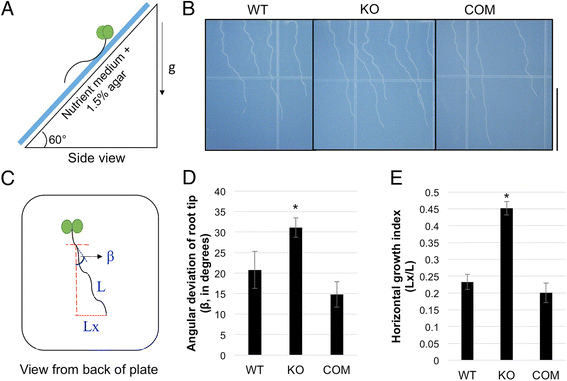Fig. 1
From:TNO1, a TGN-localized SNARE-interacting protein, modulates root skewing inArabidopsis thaliana

Loss of TNO1 protein function causes increased rightward root skewing.aSide view of the setup for the root skewing assay on growth medium solidified with 1.5% agar. Seedlings were grown vertically for 3 days in long day (LD) conditions, after which the root tip position was marked. The plates were then slanted backwards, 30o垂直,成长为另一个4天。bImages of WT,tno1mutant (KO) and complementedtno1mutants (COM) displaying skewing of roots away from the vertical. Scale bar =1 cm.cSchematic diagram of analysis of a root to determine the angular deviation of the root tip (β), the horizontal root-tip deviation (Lx) and the length of the root (L). A higher value of β and HGI (=Lx/L) indicate increased skewing.dAngular deviation of root tips of WT, KO and COM seedlings subjected to the root skewing assay as described in (a).eHorizontal growth index (HGI) of roots of WT, KO and COM seedlings subjected to the skewing assay. HGI is the ratio of the horizontal root tip deviation (Lx) and root length (L). All values represent the means of 3 biological replicates with 12–15 seedlings analyzed for each replicate. Error bars indicate standard error.Asterisksindicate a statistically significant difference (P< 0.05) by Student’st-test
